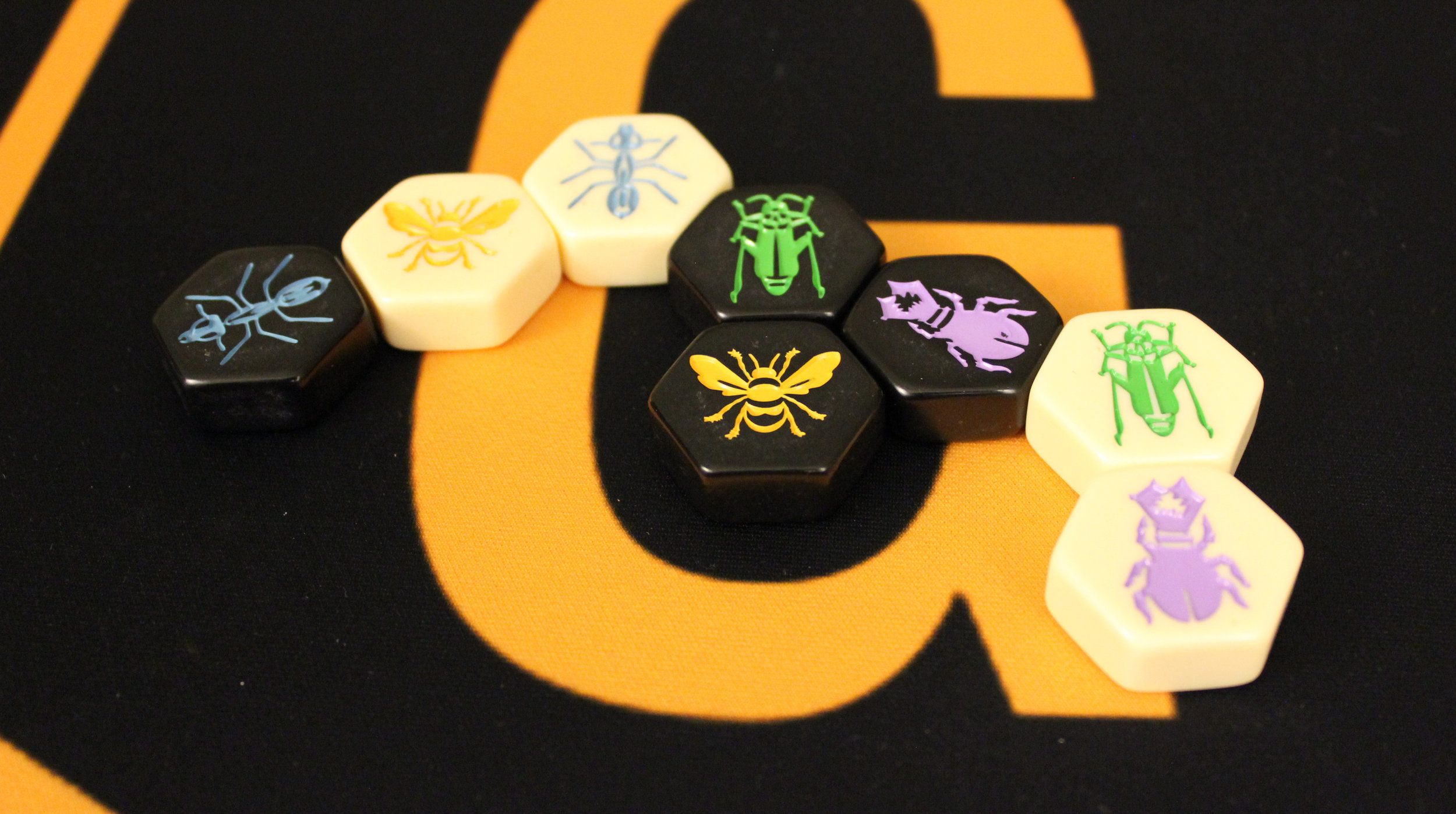Hive
On Wednesday, February 15th, we posted our Valentine's Day Special: 2 Player Games, our first ever video and a quick introduction to some of our favorite 2-player board and card games. Due to timing and health issues, the video was released late and no written reviews were given for the games. We are taking the time to remedy that with these 2 Player Games: Revisited posts.
Hive (2001) (BGG Link) - 2-player, abstract, tile placement
Designer & Artist: John Yianni
Publisher: Gen42
Number of Players: 2
Playing time: 15 minutes
MSRP: $32 (Pocket: $25)
(Pictures are from Hive Pocket, originally released in 2010.)
Hive is a 2-player abstract game that uses hexagon tiles and no actual board. Instead, players take turns placing pieces down one at a time, and then move around each other. The goal of the game is to completely cover your opponent's Queen Bee tile on all six sides. Queens must be placed by the fourth turn, and no other tile on your side can be moved until the Queen is placed.
Each tile does something different, and the strategy comes from placing the right tiles at the perfect moments, building out the "hive" in such a way that your opponent becomes trapped. There are moves, countermoves, stalling tactics, and plenty of maneuvers. While not as complex as chess, it has a lot in common with it.
One of the rules that to me defines the game is the "One Hive" restriction, which means just that: at no point can a tile be moved if it will split the "hive" (the play area that has been created by the tiles) into two or more separate sections. This means that pieces can't easily escape certain situations: distracted players could waste several turns trying to free their Queen while their opponent springs a trap. There are a couple more rules that we haven't covered here, but this should give you a basic run-down of how the game is played.
So how do you surround your opponent's Queen Bee? With an army of bugs, of course! Queens, like the King piece in Chess, can only move one space at a time. However, the other pieces allow for a variety of movement options:
- The Beetle can only move one space at a time, but they can also climb on top of other pieces, trapping them in place.
- The Grasshopper "hops" over other pieces to land on the other side.
- The Ladybug moves up over two pieces and then has to come back down.
- The Mosquito copies the abilities of any piece it's touching.
- The Soldier Ant moves all around the outside of a hive as many spaces as it can.
- The Spider moves three spaces only, no more or less.
These are the ones that are included in Hive Pocket, but you can pick up the Pillbug in an expansion as well.
Hive is, in my opinion, one of the break-out hits of modern board gaming. Its colorful pieces and simplicity of play make it an ideal game to teach to children, or to fans of chess or checkers looking for something different to try. Its ease of portability and lack of actual board makes it a great travel game. Of all the games I quickly touched on in our Valentine's Day Special, this is one of the few that I feel is a necessary addition to a board gamer's collection. It's fast, easy, and has a lot of replayability. It is my understanding that Hive has an incredibly large following, complete with tournaments, preferred starting moves, and meta-analysis akin to chess. Don't let that intimidate you; I sure haven't. Check it out if you get the chance.
Geekundspiel Rating: Great!







